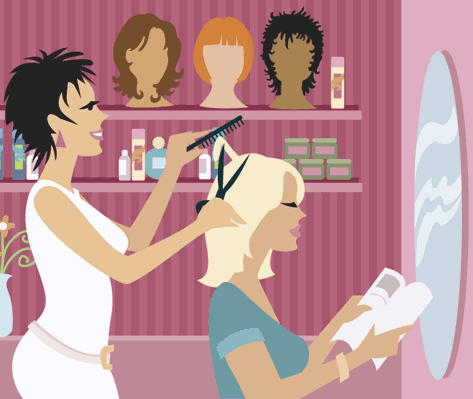When we hear the word salon, most of us think of this:
However, our aim here does not concern perms, blowouts, or conditioning treatments. It’s about starting your own interior design salon.
Another definition of salon is a gathering of people. Specifically, a gathering to discuss, titillate, amuse, and exchange ideas. Most often, a salon focuses on a single topic or discipline, and brings together people sharing a thread between them – a group of writers, theorists, scientists, etc. However, the more diverse and eclectic a group is, often the more stimulating the conversation.
Salon gatherings began in the 16th century when upper-class intellectuals met formerly within large reception halls or personal mansions to exchange opinions about history, literature, and cultural issues. Over time, salons evolved from upper crust decorum in favor of spontaneity and free-flowing conversation.
Yet, the founding principles of salons are extended to today where idealistic, honest, radical, and unique conversations and debates form through gathering like or unlike minds in the egalitarian purpose of developing new ideas out a discipline, or out of an immediate or worldly issue.
Whether it is hosted by a specific person or held in a specific location, think about how YOU can start your own salon with friends, friends of friends, classmates, instructors, and professionals. This can plug you into a unique and fun social group, and provide you with innovative, collaborative ideas for your interior design mind and career. Make sure to think about using your IIDA Campus Center for help with organizing, creating, and scheduling a salon. Email us at socialmedia@iida.org if you do organize a salon, we’d love to promote it!
One of the more historically famous salons featured Ernest Hemingway, Gertrude Stein, and Pablo Picasso (think Midnight in Paris) gathering under one roof, sharing thoughts and influencing each other’s work – all in the name of expanding and bettering their professional and personal goals. You can start on that path too by starting your own salon; just make sure people know it isn’t a curl-up and color treatment opportunity.
Images Sources:

http://alluresalonandspa.biz/page/1nb40/MONTHLY_SPECIALS.html
















